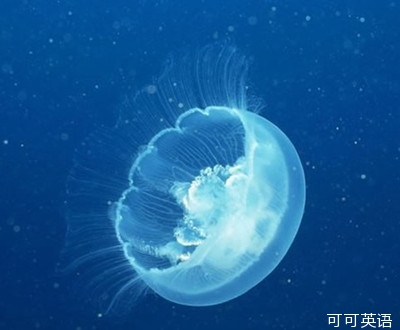Life finds a way. It seems wherever we look, microbes are there, whether high in the sky or more than a kilometer deep underground.
生命自有其法。在我們所能觀察到的所有地方,無論是高空中還是地下一千米深處似乎都有微生物的身影。
And now scientists have found signs of life more than 11 kilometers beneath the ocean's surface. Even at that crushing, frigid depth, there's eating going on. That's what a study in the journal Nature Geoscience finds.
目前科學家在海平面以下11千米的地方發現了生命的跡象。即使是在如此壓迫而又嚴寒的深處,覓食活動仍在繼續。這項研究發表在《自然地球科學》期刊上。

A deep-sea lander with oxygen sensors found signs of microbial metabolism at the Challenger Deep, the oceans' deepest spot. A video camera also saw shrimp-like creatures called amphipods busy scavenging. And sediment samples brought carefully to the surface were found to contain bacteria and archaea.
一個裝有氧傳感器的深海探測器在海洋最深處——挑戰者深淵發現了微生物新陳代謝的跡象。攝像機也拍攝到了一種形似蝦類的甲殼生物正忙著捕食。科學家還發現從深海小心翼翼帶到地表的沉積物樣本里含有細菌和古代細菌。
The scientists suggest that life this deep is possible because the region is a nutrient trap—the researchers found that the sediment at Challenger Deep is richer in food supplies than sediment at more shallow depths nearby.
科學家認為生命之所以能存在于這樣的深度,是因為該地區富含營養物質——研究人員發現挑戰者深淵的沉積物比附近較淺深處的食物供應更充足。
The research also shows that James Cameron was flat out wrong during his pioneering dive to this dark depth last year. He opined that he was looking out on a "sterile, almost desert-like place" but hardly anything on Earth is sterile, including deserts. That may hold true for Mars as well. Whatever the conditions, don't bet against the microbes.
研究人員還表示,去年詹姆斯·卡梅隆開創性地潛入這個深邃的地方,他對這里的看法是完全錯誤的。他認為他看到的是“像沙漠一樣的不毛之地”,然而即使是在沙漠也不可能完全沒有生命。也許這一觀點也適用于火星。無論在什么條件下,都不要輕視微生物的生存能力。













